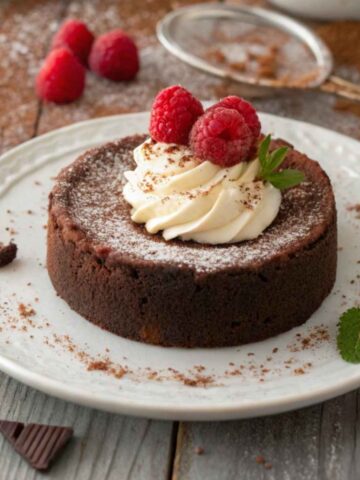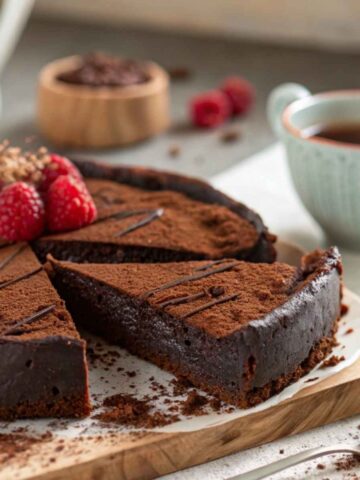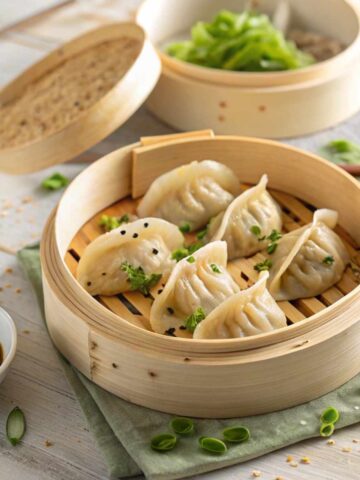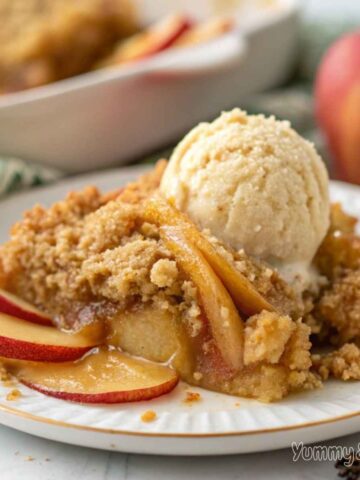Gluten free Bagels are one of the most cherished breakfast items worldwide. They are known for their satisfying chewy texture, golden crust, and versatility in terms of flavors and toppings. Whether you prefer a classic plain bagel with cream cheese, an everything bagel with smoked salmon, or a cinnamon raisin bagel with butter, they are a staple in many households. But for those on a gluten-free diet, finding a bagel that delivers the same taste and texture can feel impossible.

Whether you're someone with celiac disease, gluten sensitivity, or just looking to cut gluten out of your diet, this guide will provide everything you need to know to enjoy gluten free bagels. This article will cover everything from how to make them at home, store-bought options, and their health benefits to troubleshooting common baking mistakes.
Jump to:
Gluten-Free Bagel Recipes
How to Make Gluten Free Bagels at Home
Making gluten free bagels at home can be fun and rewarding for those who love baking. With the right ingredients and careful attention to the dough’s hydration and texture, you can make gf bagels that taste as good as—or better than—those you’d find in a bakery.
Here’s a detailed recipe to get you started:
Ingredients:
- 2 1/4 cups gluten-free all-purpose flour (such as Bob's Red Mill or King Arthur Measure for Measure)
- 1 1/2 teaspoons xanthan gum (if not included in your flour blend)
- Two tablespoons sugar (for sweetness and fermentation)
- One tablespoon of instant yeast (ensures a good rise)
- One teaspoon salt
- 1 cup warm water (adjust as needed)
- One tablespoon of olive oil (for moisture)
Instructions:
- Prepare the dough: Start by whisking together the gluten-free flour, xanthan gum (if using), sugar, yeast, and salt in a large bowl. Slowly pour the warm water and olive oil, mixing as you go. You should end up with a soft, slightly sticky dough.
- Knead the dough: Transfer it onto a well-floured surface (using gluten-free flour) and gently knead it for about 3-4 minutes. The goal is to develop structure while keeping the dough soft and pliable.
- Shape the bagels: Divide the dough into six equal pieces. Roll each piece into a ball, then use your thumb to poke a hole in the center and stretch it out slightly. This will give you the classic bagel shape.
- Boil the bagels: Bring a large pot of water to a boil and gently lower each bagel into the water. Boil for 1 minute on each side. This step is crucial for creating that signature bagel chewiness.
- Bake: Preheat your oven to 400°F (200°C). Place the boiled bagels on a baking sheet lined with parchment paper, brush them with an egg wash for a shiny crust, and bake for 20-25 minutes until golden brown.
The Best Gluten-Free Flour Blends for Bagels
Choosing a suitable gluten-free flour is one of the most essential steps to creating delicious gf bagels. Different flours offer unique textures and flavors; some work better in bagels than others.
Bob’s Red Mill Gluten-Free All-Purpose Flour: This blend includes garbanzo bean flour, potato starch, and tapioca flour, making it a versatile bagel option.
King Arthur Measure for Measure Flour: This gluten-free flour is a 1:1 substitute for regular flour and works well for chewy, fluffy bagels.
Cup4Cup Gluten-Free Flour: Developed by a chef, this flour blend produces tender, chewy bagels and is known for its smooth texture.
When choosing a gluten-free flour blend for bagels, look for one that includes xanthan gum or guar gum. These ingredients act as binding agents that mimic gluten’s elasticity, helping the bagels hold their shape and structure.
Step-by-Step Recipe for Fluffy, Chewy Bagels
Achieving the right texture for gf bagels can be tricky. Still, with the following tips, you can create bagels that are light, fluffy, and satisfyingly chewy:
Hydration matters: Gluten-free flours absorb more liquid than wheat flour, so you may need to adjust the water in your dough. The dough should be soft but not too sticky.
Use a binder: Adding xanthan gum or psyllium husk helps give the dough elasticity, making it easier to work with and helping it rise better in the oven.
Boiling the bagels: Don’t skip the boiling step! This gives the bagels their signature chewy texture by setting the crust before baking. Adding a bit of baking soda to the boiling water can also enhance the golden color and help create a crispier crust.
Health and Nutrition
Are Gluten Free Bagels Healthier Than Regular Bagels?
There’s often a misconception that gluten-free foods are automatically healthier than their gluten-containing counterparts. However, this isn’t always the case. When comparing gf bagels to regular bagels, the health differences depend mainly on the ingredients used.
Gluten free bagels are essential for individuals with celiac disease or gluten sensitivity. Some gf bagels are made with nutrient-dense flours, such as almond or chickpea flour, which provide more protein and fiber. However, other gluten free bagels might be made with refined starches, such as rice flour or potato starch, which offer little nutritional value and can be higher in carbohydrates.
Regular Bagels: Made from wheat flour, regular bagels often contain more protein due to gluten. However, they are also high in carbohydrates and can contribute to spikes in blood sugar for some individuals.
Nutritional Benefits and Downsides of Gluten Free Bagels
Pros:
gf bagels are necessary for those with gluten intolerance or celiac disease. Some gluten-free flours, such as almond flour, offer additional health benefits, such as increased fiber and healthy fats.
Cons:
Some gluten free bagels, especially store-bought ones, are made with high-glycemic flour, which can lead to blood sugar spikes. They may also contain more sugar and added preservatives compared to homemade bagels.
Gluten Free Bagels for Weight Loss and Special Diets
If you follow a weight-loss diet or another special diet, such as paleo or keto, gluten free bagels can still fit into your plan. By choosing flours like almond flour or coconut flour, you can create bagels that are lower in carbohydrates and higher in protein and fiber, making them more suitable for low-carb diets.
For those on a paleo diet, bagels made with almond flour, eggs, and tapioca starch offer a grain-free option that still has the structure and flavor of traditional bagels. Meanwhile, for keto followers, bagels can be made with fathead dough, which combines almond flour, mozzarella cheese, and eggs to create a low-carb, gluten-free bagel alternative.
Store-Bought Options
Best Gluten-Free Bagel Brands Available Online
SupposeSuppose you don’t have the time to bake your bagels. In that case, there are several excellent store-bought gluten-free bagel brands that you can order online or find in your local grocery store. Here are some of the top brands that have received rave reviews from gluten-free eaters:
Udi’s Gluten Free Bagels:
Udi’s offers a variety of gf bagels, including plain, whole grain, and cinnamon raisin. Their bagels are known for their soft texture and good rise, making them a favorite among gluten-free consumers.
Canyon Bakehouse Bagels:
These gf bagels are made with whole grains and have an outstanding balance of softness and chewiness. They come in classic flavors like plain and everything and seasonal varieties.
O’Doughs Bagels:
Known for being low-calorie and gluten-free, O’Doughs bagels blend potato starch, tapioca starch, and flax, giving them a unique flavor and texture. They’re also thinner than traditional bagels, making them a lighter option for breakfast.
Top Gluten Free Bagels You Can Buy
Taste and texture are critical to the best gluTaste and texture are essential to free bagels, taste, and review of computer-free bagels:
Udi’s Plain Bagels:
These are soft and slightly chewy, though they can be a bit dry compared to homemade options. They toast up well and pair nicely with cream cheese or jam.
Canyon Bakehouse Everything Bagels: These bagels pack a lot of flavor with a mix of sesame, poppy seeds, onion, and garlic. They have a robust, chewy texture that closely mimics traditional bagels, making them a top choice for those seeking an authentic bagel experience.
O’Doughs Thins:
For those looking for a lower-calorie option, O’Doughs Thins are perfect. These bagels are smaller and thinner than typical bagels, making them ideal for lighter meals or snacks.
Common Mistakes
When Baking gf Bagels (and How to Fix Them)
Baking gf bagels can be challenging, and bakers might encounter common pitfalls. Here’s how to troubleshoot the most common issues:
Crumbly Dough:
If your gluten-free bagel dough is too crumbly, it's likely too dry. You can fix this by adding a little more warm water or milk to help the dough come together. A binding agent like xanthan gum or psyllium husk should also be included to improve elasticity.
Dense Bagels:
Dense bagels are often the result of overmixing the dough or not allowing the yeast enough time to rise. To fix this, knead the dough gently and let it rest for at least an hour to allow the yeast to activate correctly.
Flat Bagels:
If your bagels turn out flat, it could be due to inactive yeast or the dough not being proofed long enough. Always check the expiration date on your yeast, and ensure the dough rises in a warm, draft-free environment.
Why Do My Gluten Free Bagels Come Out Dense?
Dense gf bagels can result from a few factors, including over-kneading the dough or not allowing enough time to rise. Gluten-free doughs are more delicate, so handling them with care is essential. Additionally, using the right amount of xanthan gum or psyllium husk can help maintain the structure and texture of the bagels.
How to Get a Chewy Texture in Gluten Free Bagels
For that classic chewy texture that makes bagels so irresistible, be sure to boil the bagels before baking. The boiling process helps set the crust, giving the bagels their signature bite while keeping the inside soft. Adding a small amount of tapioca starch or psyllium husk to your gluten-free flour blend can also help enhance the chewiness of your bagels.
Conclusion
When made with the right ingredients and techniques, gluten free bagels can be as delicious as traditional bagels. Whether making them at home or purchasing store-bought versions, understanding the nuances of gluten-free baking will help you achieve the perfect bagel every time. From selecting the best gluten-free flours to ensuring a chewy texture, these bagels will become a staple in your gluten-free kitchen.
FAQs
A blend of rice flour, potato starch, and tapioca flour works well for gluten-free bagels. Adding xanthan gum or psyllium husk will help mimic the texture of gluten.
Many store-bought gluten-free flour blends, such as King Arthur Measure for Measure or Bob’s Red Mill, work great for gf bagels.
While gf bagels may have a slightly different texture due to the lack of gluten, they can still be chewy, flavorful, and satisfying with the right recipe.
To avoid dense bagels, let the dough rise properly and avoid over-kneading. Adding the right amount of xanthan gum can also help maintain a fluffy texture.
gf bagels can be healthier with nutrient-dense flour like almond or chickpea flour. Still, store-bought options may contain more sugar or less fiber than traditional bagels.

Gluten Free Bagels
- Total Time: 55 minutes
- Yield: 8 slices 1x
Description
Making gluten-free bagels at home can be fun and rewarding for those who love baking.
Ingredients
- 2 1/4 cups gluten-free all-purpose flour (such as Bob's Red Mill or King Arthur Measure for Measure)
- 1 1/2 teaspoons xanthan gum (if not included in your flour blend)
- Two tablespoons sugar (for sweetness and fermentation)
- One tablespoon of instant yeast (ensures a good rise)
- One teaspoon salt
- 1 cup warm water (adjust as needed)
- One tablespoon of olive oil (for moisture)
Instructions
- Prepare the dough: Start by whisking together the gluten-free flour, xanthan gum (if using), sugar, yeast, and salt in a large bowl. Slowly pour the warm water and olive oil, mixing as you go. You should end up with a soft, slightly sticky dough.
- Knead the dough: Transfer it onto a well-floured surface (using gluten-free flour) and gently knead it for about 3-4 minutes. The goal is to develop structure while keeping the dough soft and pliable.
- Shape the bagels: Divide the dough into six equal pieces. Roll each piece into a ball, then use your thumb to poke a hole in the center and stretch it out slightly. This will give you the classic bagel shape.
- Boil the bagels: Bring a large pot of water to a boil and gently lower each bagel into the water. Boil for 1 minute on each side. This step is crucial for creating that signature bagel chewiness.
- Bake: Preheat your oven to 400°F (200°C). Place the boiled bagels on a baking sheet lined with parchment paper, brush them with an egg wash for a shiny crust, and bake for 20-25 minutes until golden brown.
Notes
-
Nutrition (Per Slice)
- Calories: 150
- Protein: 3g
- Carbs: 25g
- Fat: 4g
- Add herbs or seeds for extra flavor.
- Store leftovers in an airtight container for up to 3 days.
- Prep Time: 15 minutes
- Cook Time: 40 minutes
- Category: Side Dish
- Cuisine: American
Nutrition
- Calories: 150
Keywords: Gluten Free Bagels, gluten-free baking, Gluten-Free Bread





Leave a Reply